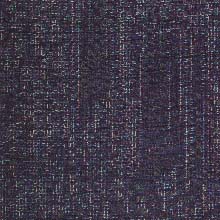Weave (p. 68 )
1. Produced in Yuki City, Ibaraki Prefecture.
2. Characteristics: The best "Tsumugi" fabrics used for clothing, designated as an "Important Intangible Cultural Property. "The silk fabric which is hand spun from the floss is dyed manually so that splash patterns will come out on the fabric after it is woven. They are hand woven in "Jibata"(a loom with no legs) and the designs are small crosses of splash patterns. Warm, light, tough and free from wrinkles, the fabric does not fade or discolor easily, but increases its luster the more frequently it is washed and stretched. This fabric is of such good quality that it is said that "Yuki Tsumugi" should first be worn as a night wear and then used as a going out wear. It takes 10 to 15 days to weave a plain fabric and 30 to 45 days to weave a small patterned fabric for a piece of cloth required for an adult garment (36 cm width and 840 cm length).
3. Uses: Clothing.
4. History: The pongee was well known as "Hitachi Ashiginu"( a fabric woven with thick and rough silk threads) in the Heian Period and as "Hitachi Tsumugi" in the Kamakura Period. In 1602 the name was changed to "Yuki Tsumugi" as it became an item for presenting to the Shogun. After that, weavers from Ueda(Nagano Prefecture) were invited, resulting in an improvement of the quality with the technique used in weaving stripes. The production was a side job for farmers in the middle of the Edo Period. At first, only the plain and striped fabrics were produced, but the striped "Kasuri" was invented in 1866, the splash patterns made of both warp and weft in 1873 and crepe pongee in the early Taisho Period. The fabric was well known in the old days and quoted in a poem in "Manyoshu"(Ten Thousand Leaves), an anthology of 4,516 poems, compiled in late Nara or early Heian Period, around 800.
I have woven a cloth
With silk threads spun from
New cocoons of Mt. Tsukuba.
Would that it be a pretty costume
Worn by my loved one.




